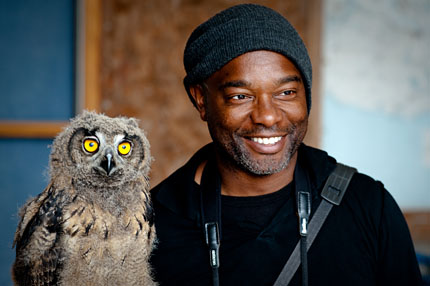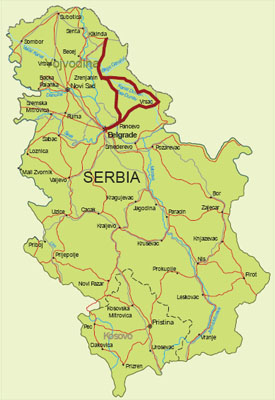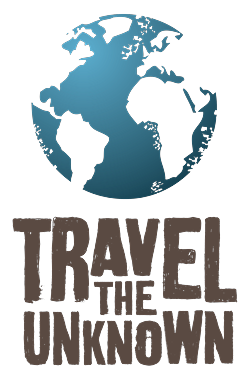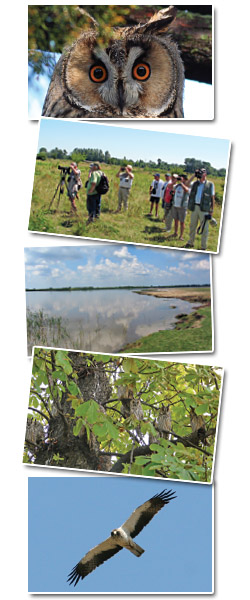Serbian Birds of prey and Owls Spring Tour with David Lindo
16 May -23 May 2014

>> see photos from our previous november 2012 tour here <<
Program itinerary:
Day 1. 16.05.2015. Belgrade-Zrenjanin (D)
After arrival in Serbia, departure from Belgrade to Zrenjanin. Overnight and dinner in hotel in Ecka.
Day 2. 17.05.2015. Kikinda, Rusanda and environs (B D in local restaurant)
Here you can see: Red-footed Falcons, Common Kestrels, Barn, Long-eared, Little Owls). Overnight in Ecka.
Day 3. 18.05.2015. Rusanda and environs (B D in local restaurant)
Here you can see: Red-footed Falcons, Common Kestrels, Barn, Long-eared, Little Owls). Overnight in Ecka.
Day 4. 19.05.2015. Zrenjanin – Vršac, Tamis (B D in hotel)
Departure to Vrsac, visit to the Tamis Wetlands and Fishponds. Overnight and dinner in hotel in Vrsac.
Day 5. 20.05.2015. Vršac (B D in local restaurant)
Whole day on Vrsac Mt. exploring and ringing owls and birds of prey. Overnight in Vrsac.
Day 6. 21.05.2015. Vršac (B D in local restaurant)
Whole day on Deliblato Sands with the birds of prey. Overnight in Vrsac.
Day 7. 22.05.2015. Deliblato sands (B D in local restaurant)
Whole day on Deliblato Sands with the birds of prey. Overnight in Vrsac.
Day 8. 23.05.2015. Vršac-Belgrade (B)
Vrsac – Belgrade. After breakfast, departure to Belgrade.
Site 1 (Important Bird Area)
Lake Rusanda is a highly saline, shallow wetland in the Vojvodina region of Northern Serbia. Beside well known nature reserve Slano Kopovo, this lake is one of the last remaining natron lakes in Serbia and probably the saltiest one of all in the whole of Pannonian plains. Lake Rusanda has a C-shape and is surrounded by agricultural plough land and pastures, while in the centre of the ellipse there are orchards and vineyards with cottages. Lake itself is shallow, only up to 60 cm at it’s deepest points and stretching nearly 4.5 km and 300-400 m wide. On the NE bank of the lake there is a large reed-bed up to 100 m wide, Other parts of the lake, especially southern and western parts of the lake don’t have reed-beds at all, but have muddy shallow banks. Water in this lake is alkaline, having up to 1.4 % of salt.
Besides Rusanda, we will also visit town of Kikinda, better known as The World Owl Capital. This unique urban town square holds up to 750 Long-eared Owls in a winter roost.
A total of 210 bird species were found during the recent and historical research on the site. The lake itself is an outstanding migratory stopover site for dozens of species such as grebes, ducks, geese, cranes, waders and gulls. Beside that, local park in the Spa holds one of the largest and densest breeding populations of Common Kestrel, Red-footed Falcon and Long-eared Owl in Serbia. Important breeding bird species include also Black-necked Grebe, Night Heron, Squacco Heron, Avocet, Black-winged Stilt and Redshank.
Around Rusanda there are several good localities with Red-footed Falcon colonies, clutches of Common Kestrel and Long-eared Owl breeding pairs, plus Barn and Little Owl breeding sites.
Site 2 (Important Bird Area)
Wetlands and carp fishponds around Tamis river are one of the finest birding spots in a whole of Serbia. Vast areas of natural and artificial ponds, marshes, wet meadows and riverine forests are scattered around a slow flowing Tamis river.
Birds include: Ferruginous Duck, Night Heron, Squacco Heron, White-tailed Eagle, Avocet, Black-winged Stilt, Black Tern, Whiskered Tern, Cetti’s Warbler.
Site 3 (Important Bird Area, Nature Reserve)
The Vrsac Mountains are arch-shaped hills covered by the mixed oak, beech, hornbeam and lime woodlands, vineyards and extensive farmland situated about 25km NE from Deliblato Sands.
Birds include: Goshawk, Sparrow Hawk, Lesser Spotted Eagle, Short-toed Eagle, Ural Owl, Tawny Owl, Little Owl, Scops Owl, Long-eared Owl, Syrian Woodpecker, Black Redstart.
Site 4 (Important Bird Area, Nature Reserve)
Deliblato Sands is a unique wilderness comprising 33,000 hectares of grasslands, farmlands and mixed forest on a large sandy region. It is bordered by the Danube, Tamis and Karas rivers and
is home to a rich flora and fauna. It’s famed for its high degree of endemism, including many unique plants and insects. The Danube sandbanks are home to the largest Central European Sand Martin breeding colony, with up to 18,000 pairs! It’s also home to Susliks, European Polecats, Marbled Polecats and at least three packs of Grey Wolves.
Birds include: White-tailed Eagle, Imperial Eagle, Short-toed Eagle, Booted Eagle, Black Kite, Goshawk, Long-legged Buzzard, Hobby, Saker Falcon, Little Owl, Scops Owl, Nightjar, Hoopoe, Bee-eater, Roller, Wryneck, Crested Lark, Sand Martin, Tawny Pipit, Barred Warbler, Collared Flycatcher, Red-backed Shrike, Lesser Grey Shrike, Golden Oriole, Ortolan Bunting.
Price per person: £900 / €1.160
Supplement for single room: £100 / €130
Price includes:
-Transfer according the program
-Accommodation in Kaštel Ečka for 3 nights (1 half board and 2 bed and breakfast) and in 3* hotel in Vršac (1 half board and 3 bed and breakfast)
-5 x dinners in local restaurant
-Guide during the tour (English speaking guide, ornithology specialist)
Price doesn’t include:
Flight to/from Belgrade
Drinks during the meals
Other meals not mentioned in the program
Accommodation in Serbia during Spring tour:
Hotel Kaštel, Ečka: http://www.kastelecka.com/index_en.html
Hotel Srbija 3*, Vršac: http://www.hotelsrbija.rs/english/
Please contact our partner in UK: Travel The Unknown
David McGuinness, david@traveltheunknown.com
Skype: traveltheunknown, +4420 7183 6371



